Abstract
A within patient double blind prospective study of symptoms and exercise tolerance was designed to determine the preferred pacing mode in 10 patients with programmable dual chamber pacemakers who also had angina pectoris. Patients were randomly allocated to one month in each of the following modes: ventricular pacing at 70 beats/min (VVI) or atrioventricular synchronous upper rate 150 beats/min (DDD 150) or 100 beats/min (DDD 100). Medications were unchanged throughout the study; none was taking beta blockers. At the end of each month patients underwent an exercise test. During each month patients recorded symptoms and their preferred pacing mode. DDD 100 was the preferred mode (seven patients). There was significantly less chest pain with this mode than with either of the other modes. There were significantly more episodes of dizziness in VVI, and two patients who developed pacemaker syndrome were unable to complete the pacing period. Three patients developed angina during exercise testing in DDD 150. Atrial synchronous ventricular pacing is better than ventricular pacing for the control of symptoms in patients with angina pectoris provided that the upper atrial tracking rate is limited.
Full text
PDF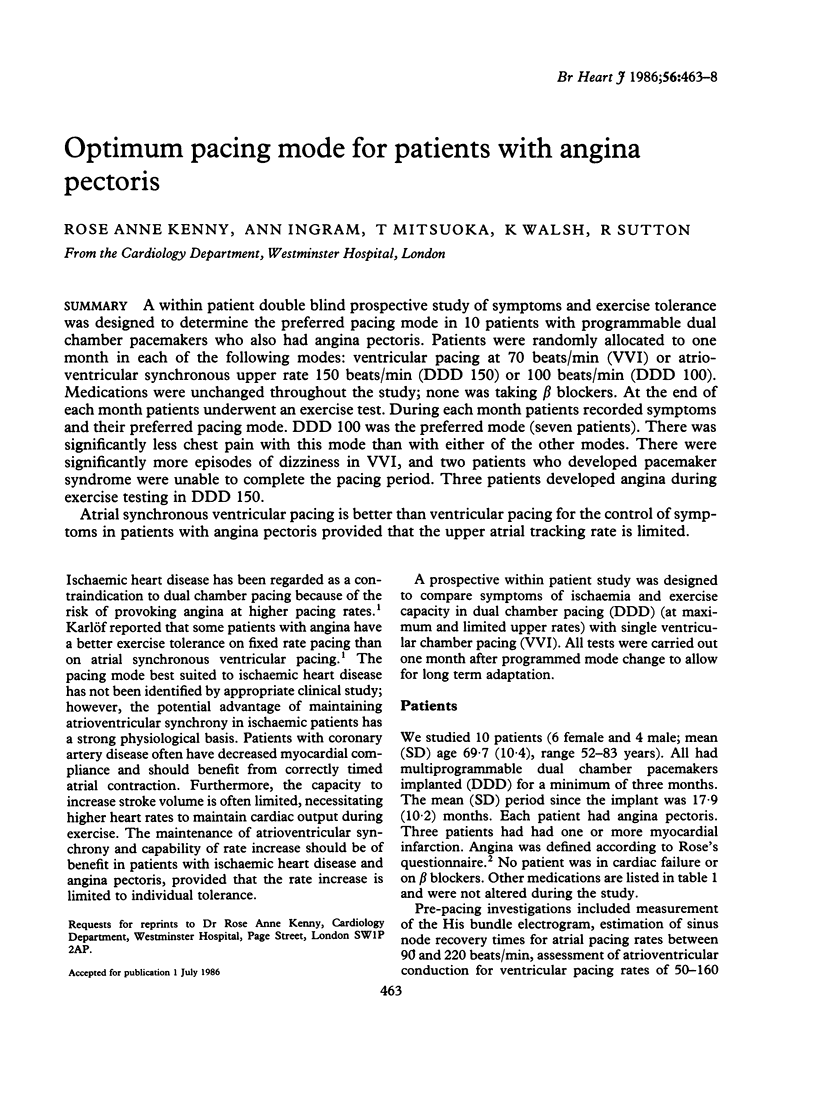
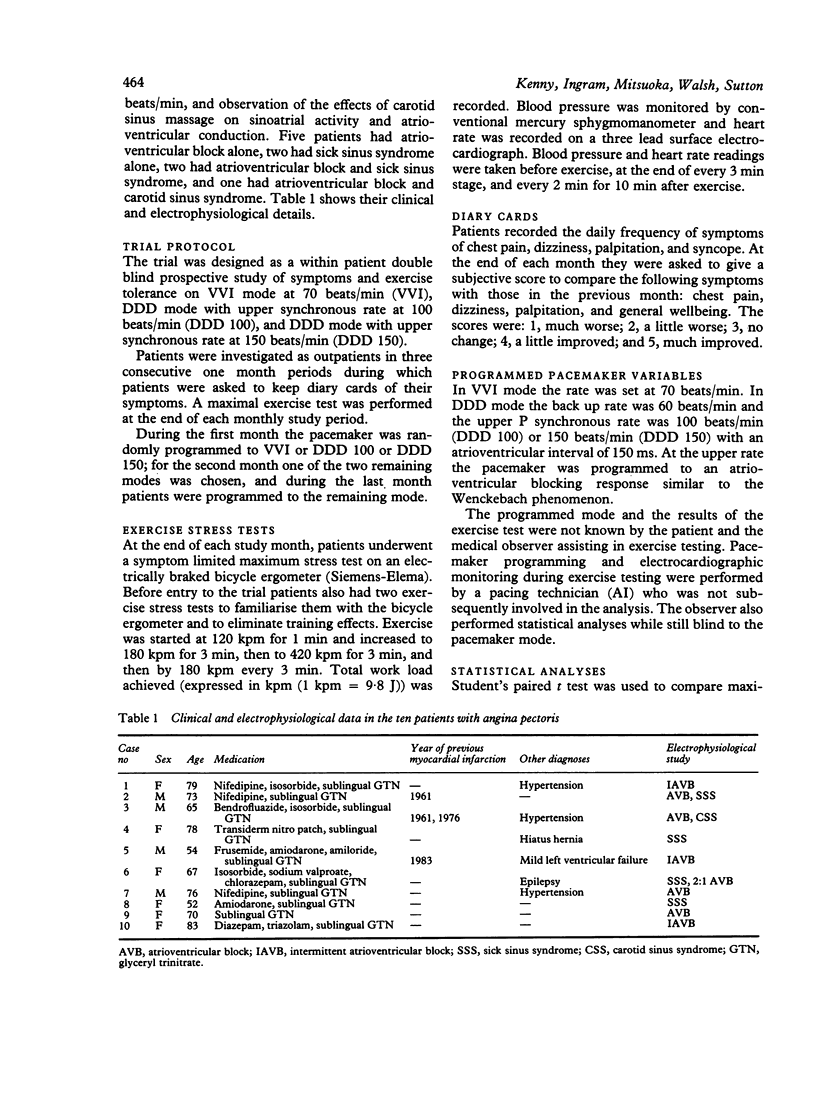
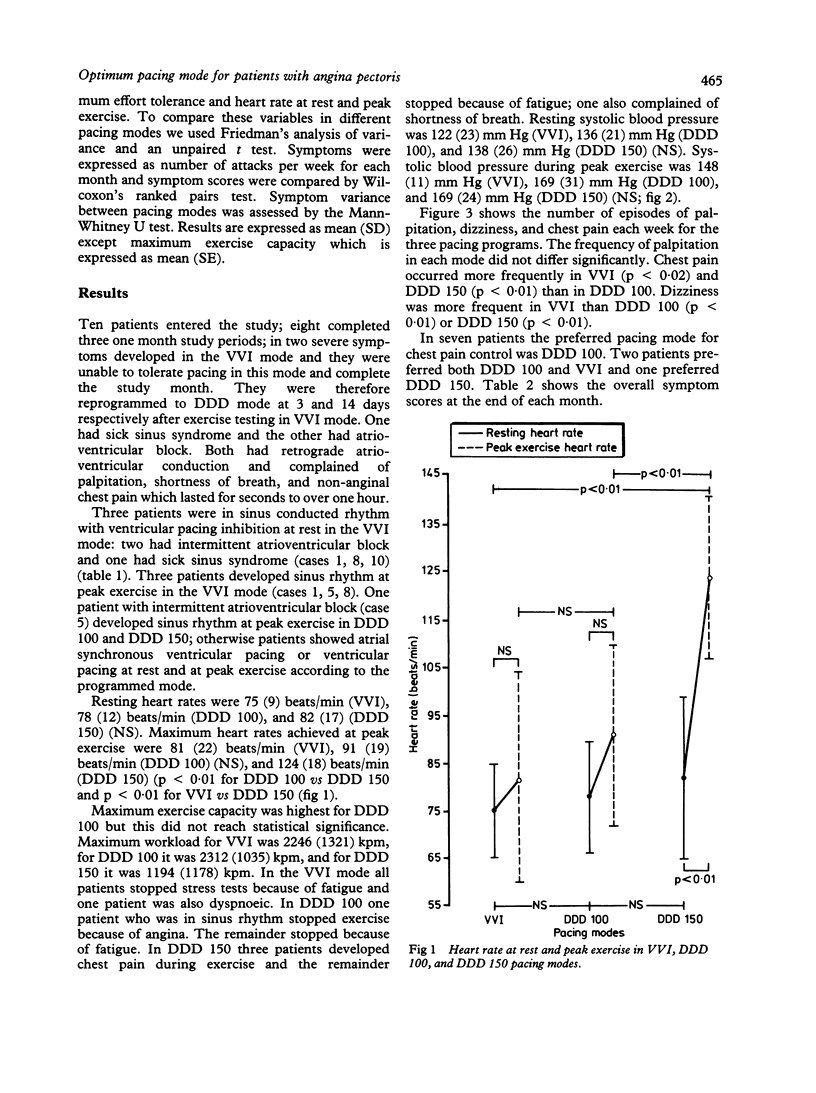
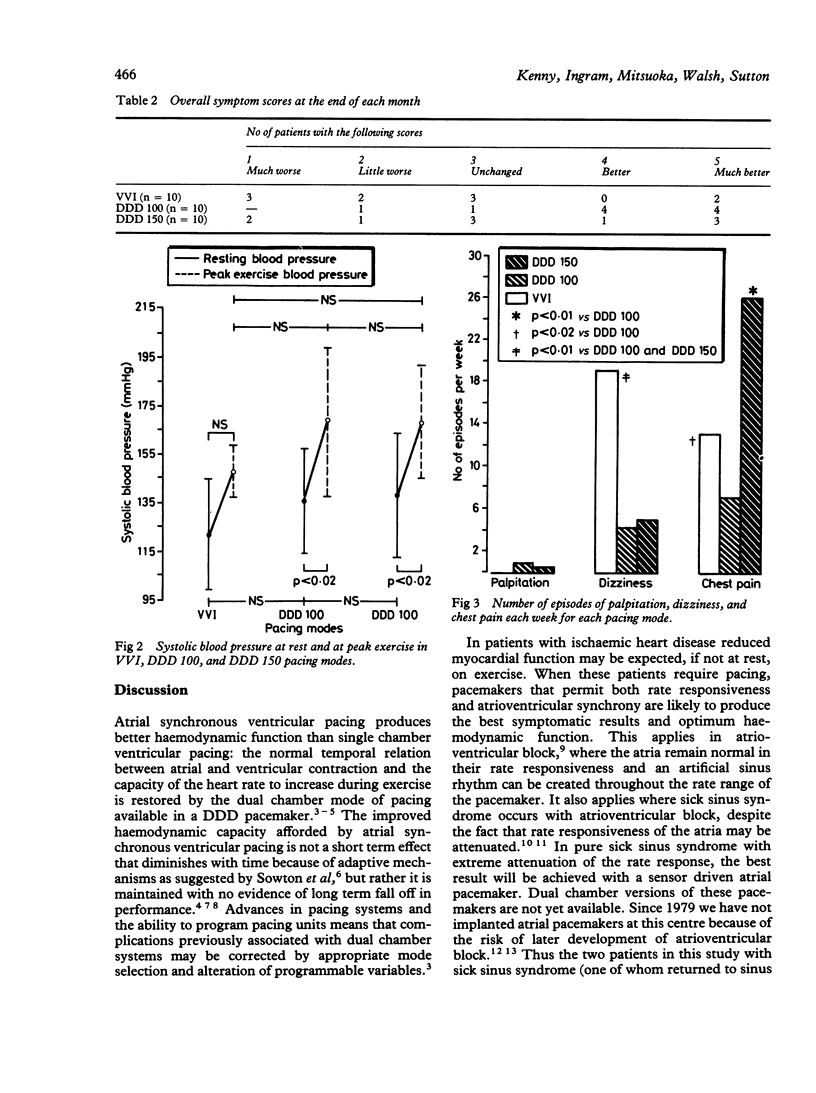
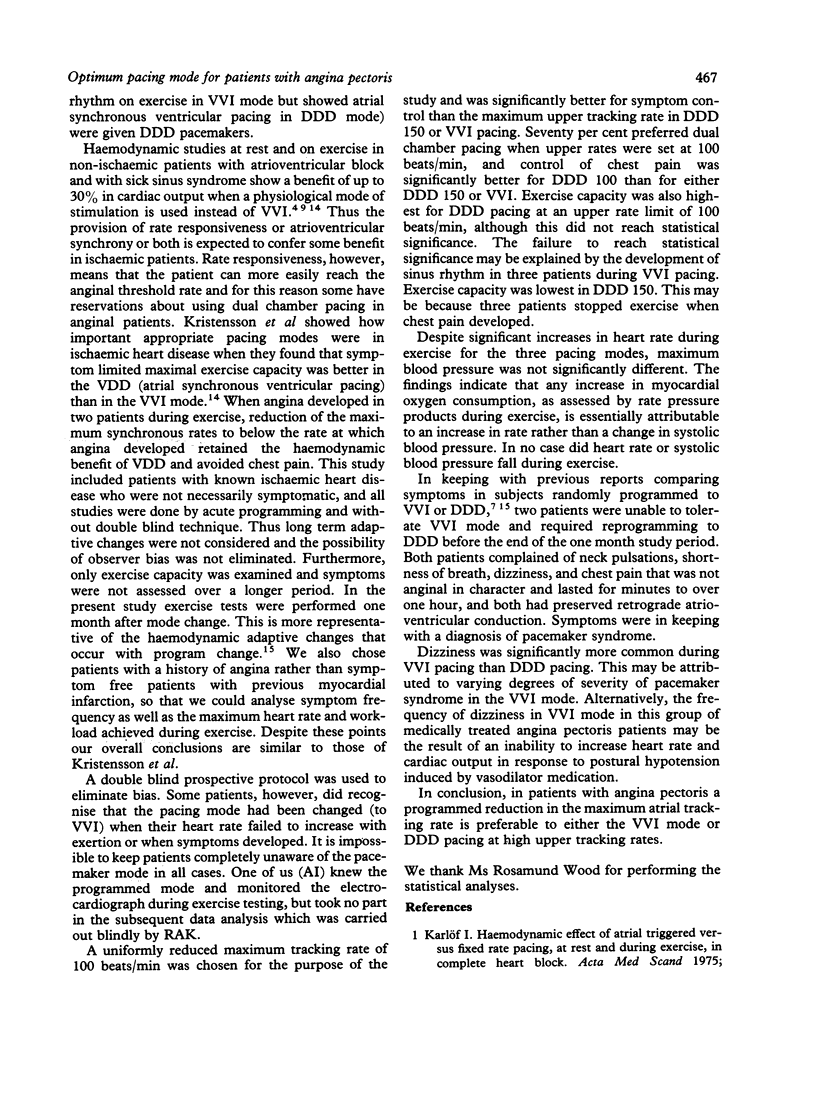
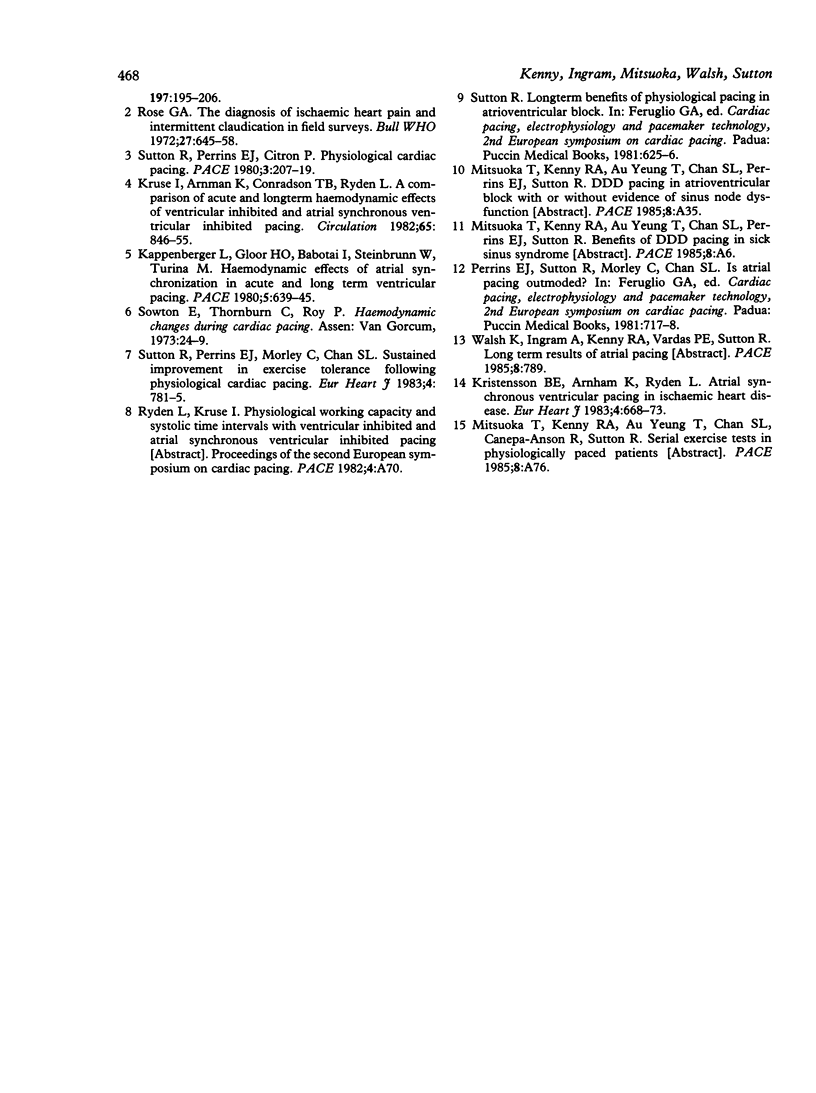
Selected References
These references are in PubMed. This may not be the complete list of references from this article.
- Kappenberger L., Gloor H. O., Babotai I., Steinbrunn W., Turina M. Hemodynamic effects of atrial synchronization in acute and long-term ventricular pacing. Pacing Clin Electrophysiol. 1982 Sep;5(5):639–645. doi: 10.1111/j.1540-8159.1982.tb02299.x. [DOI] [PubMed] [Google Scholar]
- Kristensson B. E., Arnman K., Rydén L. Atrial synchronous ventricular pacing in ischaemic heart disease. Eur Heart J. 1983 Sep;4(9):668–673. doi: 10.1093/oxfordjournals.eurheartj.a061540. [DOI] [PubMed] [Google Scholar]
- Kruse I., Arnman K., Conradson T. B., Rydén L. A comparison of the acute and long-term hemodynamic effects of ventricular inhibited and atrial synchronous ventricular inhibited pacing. Circulation. 1982 May;65(5):846–855. doi: 10.1161/01.cir.65.5.846. [DOI] [PubMed] [Google Scholar]
- ROSE G. A. The diagnosis of ischaemic heart pain and intermittent claudication in field surveys. Bull World Health Organ. 1962;27:645–658. [PMC free article] [PubMed] [Google Scholar]
- Sutton R., Perrins E. J., Morley C., Chan S. L. Sustained improvement in exercise tolerance following physiological cardiac pacing. Eur Heart J. 1983 Nov;4(11):781–785. doi: 10.1093/oxfordjournals.eurheartj.a061398. [DOI] [PubMed] [Google Scholar]
- Sutton R., Perrins J., Citron P. Physiological cardiac pacing. Pacing Clin Electrophysiol. 1980 Mar;3(2):207–219. doi: 10.1111/j.1540-8159.1980.tb04331.x. [DOI] [PubMed] [Google Scholar]


